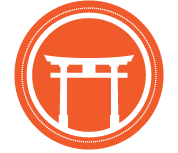Practical Aikido: Inryoku
Inryoku Volume 4 Issue 3
By Josh Paul Sensei, AOSB head instructor
From the Noma Dojo Photos. Aikido Journal.
We’re changing the name of our newsletter to Inryoku. Inryokyu has several translations: gravity (as in Earth’s gravity, not gravitas), attraction, gravitational pull, or magnetism. Aikido Founder Morihei Ueshiba used the term to describe “attractive forces.” O’sensei said that aikido is the fitting together of opposing elements like fire and water, yin and yang, or perhaps uke and nage through ki (or breath) to create a third element that could be cultivated and trained. This third element — bound attractive forces — is inryoku.
It is an esoteric concept and maybe a pretentious name for our newsletter. However, I've lately needed to be reminded of aikido’s and the dojo’s goals. O’sensei’s aikido was not concerned with victory, lethality, or commerce. O’sensei’s aikido was focused on the cultivation and development of the individual spirit and, by extension, the world around us.
Aikido training must have martial integrity. Uke and nage must engage with a spirit of shinken shobu — a fight with live blades — because it is the sincere conflict and conflict resolution created in the dojo that produces inryoku. But the spiritual concepts underlying the conflict between uke and nage are easy to lose sight of. Many esoteric ideas underlying traditional martial arts are being abandoned in favor of more tactical (or more commercially viable) concepts. “Only what works” is a phrase frequently heard. Even the word dojo, which once seemed like common parlance, is losing its currency. For example, there are twice as many monthly Google searches for “martial arts gym” than for “martial arts dojo” (n=1,600 vs 880), and 4 times as many searches for “martial arts gym” then for “aikido dojo” (n=320).
Are these search terms reflective of changes in peoples’ interest or are they more reflective of changes in the language used for the martial arts? My guess is the latter. Regardless, the point is that the aspects of the martial arts that are perceived as impractical — even the concept of a dojo as a unique, dedicated training space — are fading. However, as I wrote about in January, what’s practical and effective is entirely dependent upon why people enter the dojo, their goals, and their expectations. And this of course all assumes that aikido and esoteric philosophies about conflict and the dojo were ever popular. Maybe we are only just starting to recognize that traditions like inryoku have always existed on the fringe.
“Inside this room, all of my dreams become realities, and some of my realities become dreams.”
Exploring esoteric ideas like inryoku won’t win you any fights. However, maybe the utility of the idea lies in the recognition that through conflict — through binding together attractive forces — we can create something new. That through our training in the dojo we can develop a better appreciation and understanding of ourselves and better negotiate the world around us.
Welcome, then, to Inryoku. It is a culmination of attractive forces: esotericism and practicality; the dojo and the market; physical contact and Covid; tradition and expediency. We hope the name will remind us of aikido’s persistent and needed practicality.
Sources:
Christopher Li. Aikido without Peace and Harmony.
Christopher Li. Aikido and the Floating Bridge of Heaven.
Covid Update
Over the last few weeks many cities and states have rescinded mask and vaccination mandates. NYC is among them. At AOSB we will continue to:
Monitor and control class size through the sign-up app
Disinfect routinely
Require all eligible participants to show proof of vaccination
Wear masks as appropriate
Use our other established prevention protocols.
These measures were easy to implement and follow, and have kept our community safe. We intend to continue to do so.




